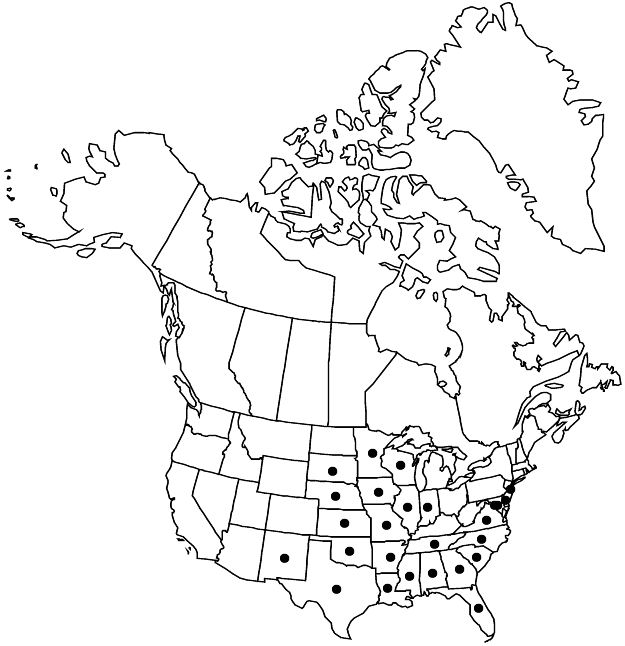Difference between revisions of "Viola missouriensis"
Pittonia 4: 141. 1900.
FNA>Volume Importer |
FNA>Volume Importer |
Revision as of 20:14, 24 September 2019
Plants perennial, acaulescent, not stoloniferous, 5–50 cm; rhizomes thick, fleshy. Leaves basal, 1–8, ascending to erect; stipules linear-lanceolate to broadly lanceolate, margins entire, sometimes distally glandular, apex acute; petiole 5–20 cm, glabrous; blade green abaxially, unlobed, usually narrowly to broadly deltate, 1.5–12 × 1.5–10 cm, not fleshy, base cordate or broadly cordate to truncate, margins ± crenate to serrate, ciliate or eciliate, apex acute to acuminate, surfaces glabrous, rarely pubescent. Peduncles 3–25 cm, usually glabrous. Flowers: sepals lanceolate to ovate, margins ciliate or eciliate, auricles 1–2 mm; petals light to dark blue-violet, lowest and sometimes lateral 2 purple-veined, lateral 2 bearded, lowest beardless, rarely lightly bearded, 15–25 mm, spur same color as petals, gibbous, 2–3 mm; style head beardless; cleistogamous flowers on prostrate to ascending peduncles. Capsules ellipsoid, 5–12 mm, glabrous. Seeds beige, mottled to bronze, 1.5–2.5 mm. 2n = 54.
Phenology: Flowering Mar–May.
Habitat: Swamps, thickets, stream banks, alluvial woods
Elevation: 50–2000 m
Distribution

Ala., Ark., Del., D.C., Fla., Ga., Ill., Ind., Iowa, Kans., La., Md., Minn., Miss., Mo., Nebr., N.J., N.Mex., N.C., Okla., S.C., S.Dak., Tenn., Tex., Va., Wis.
Discussion
What many have treated as Viola affinis, especially in the southern Gulf coastal states, is likely to be V. missouriensis. N. H. Russell (1965) considered the two as likely part of a species complex inhabiting alluvial woods and wet areas and exhibiting the typical deltate leaf blade shape. L. E. McKinney (1992) considered V. missouriensis a variety of V. sororia. Viola missouriensis appears to have a closer affinity to V. affinis, as Russell suggested; current evidence suggests maintaining V. missouriensis as a separate species.
Selected References
None.